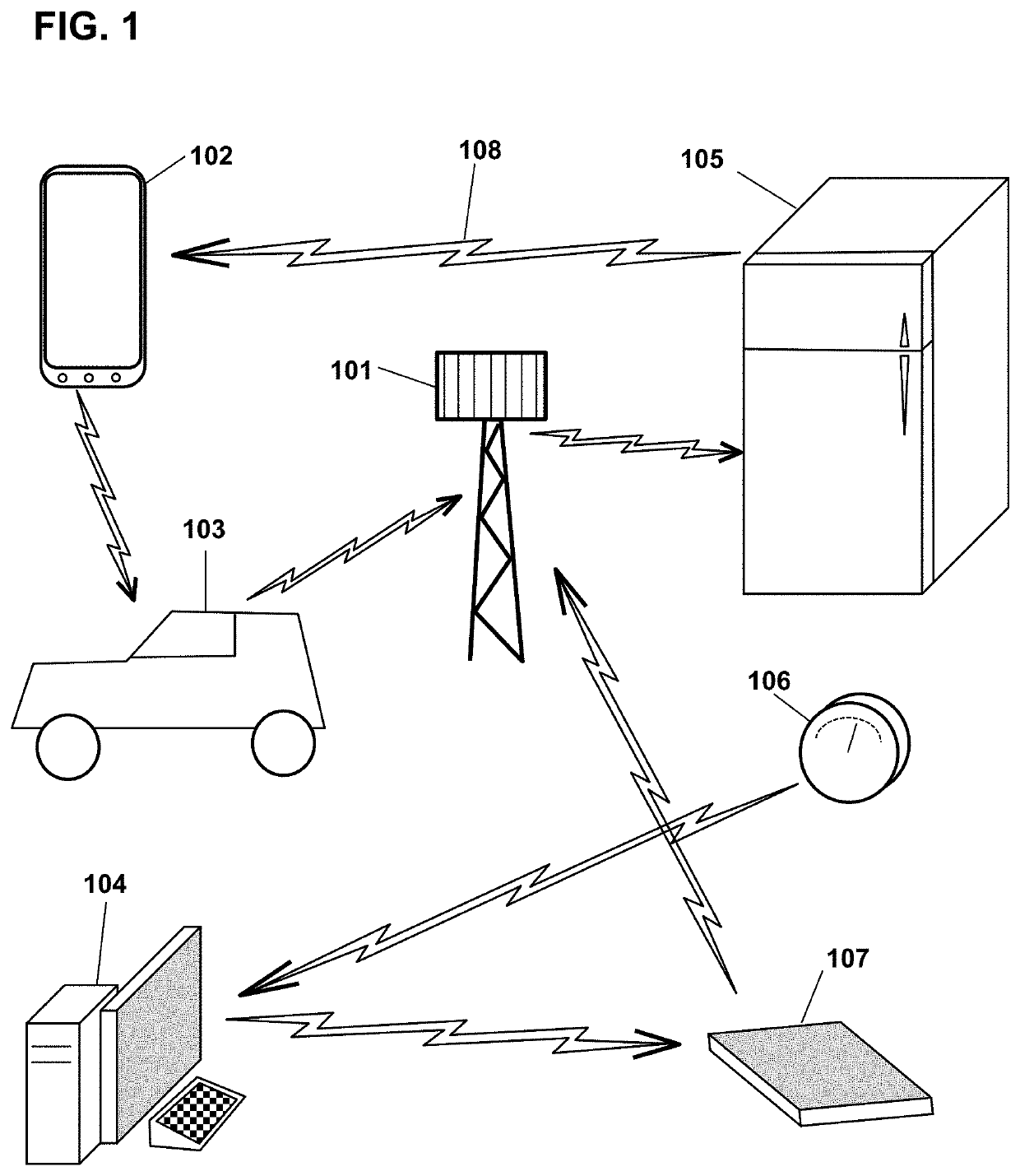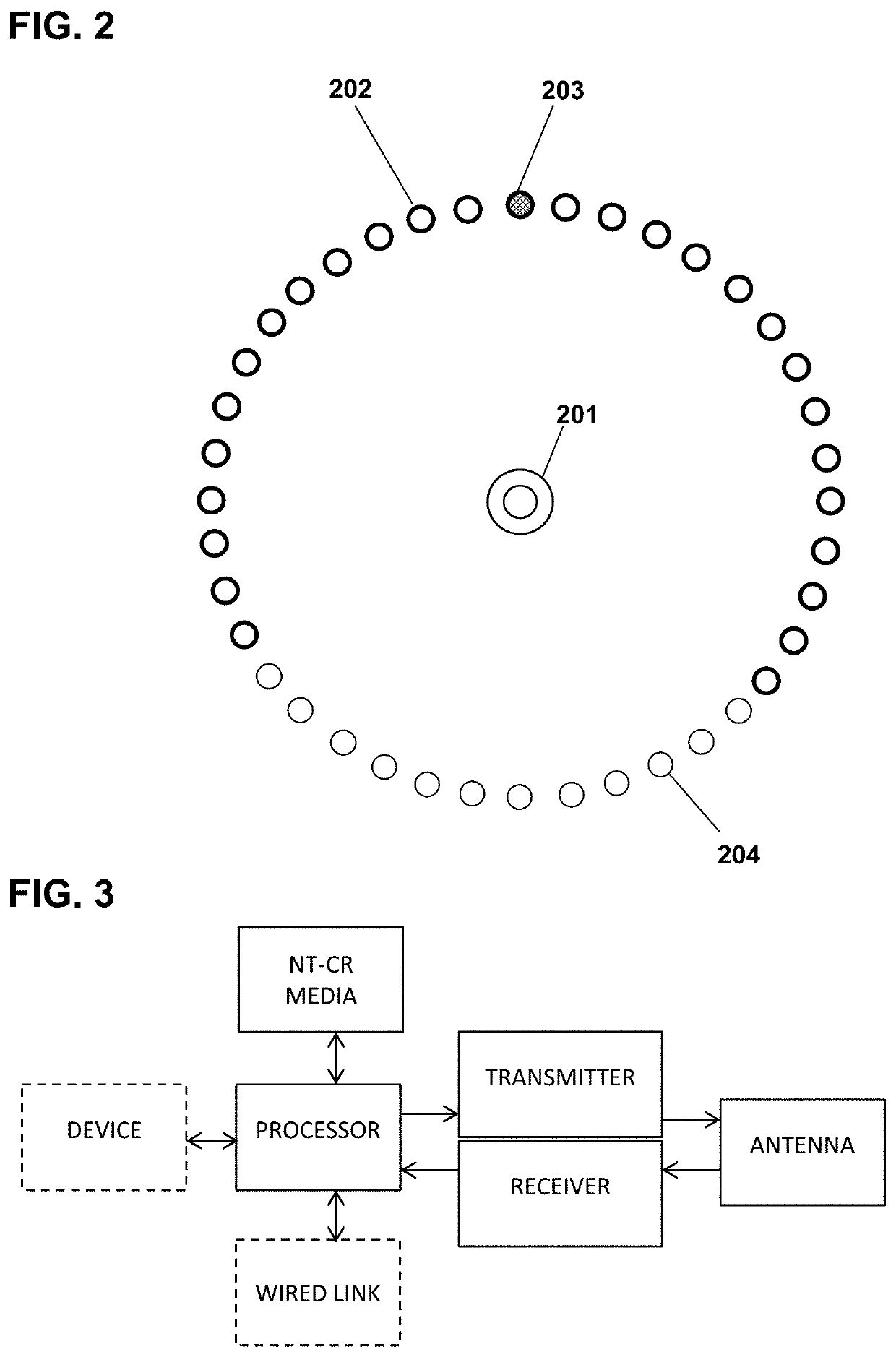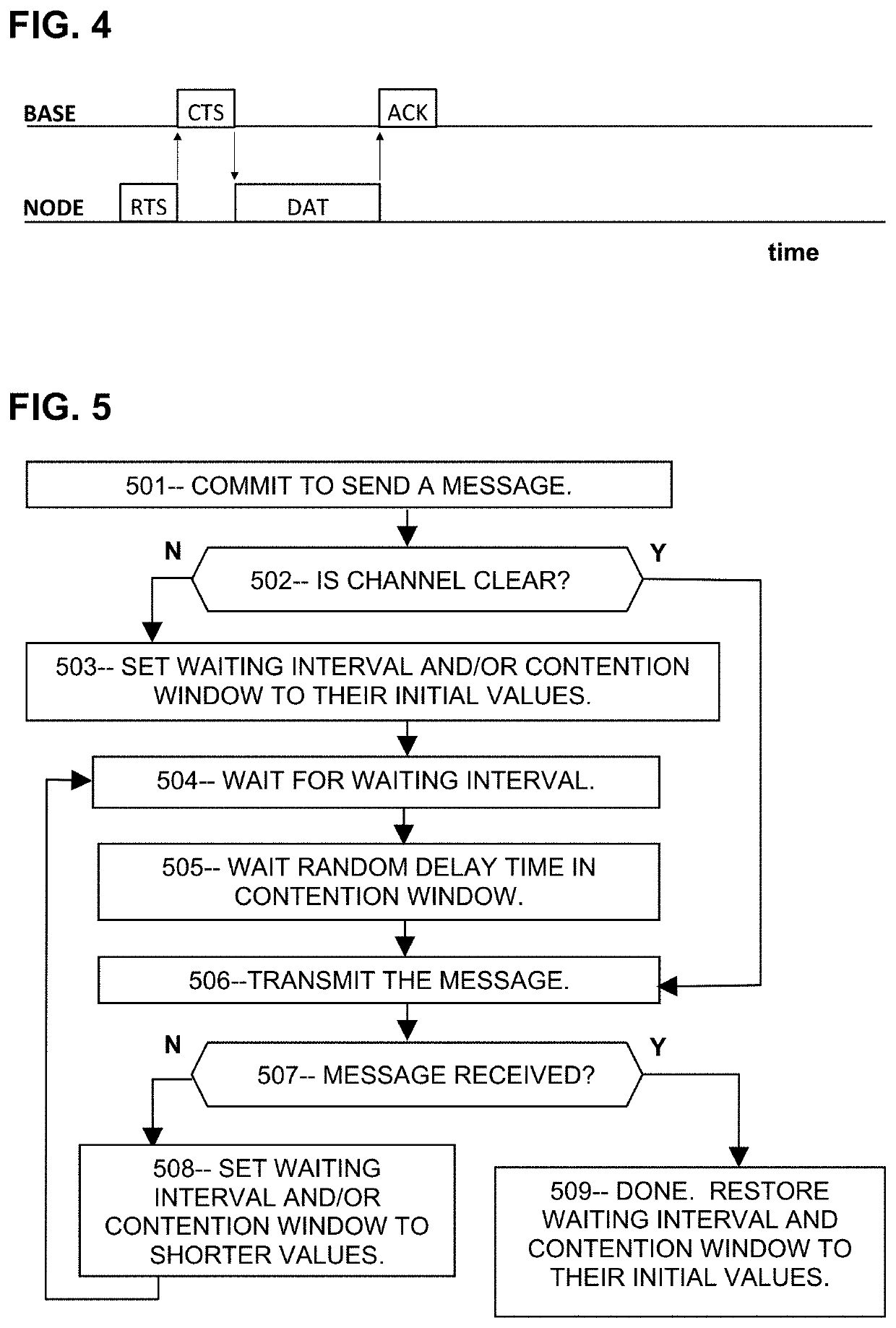Wireless Message Collision Avoidance with High Throughput
a wireless message and collision avoidance technology, applied in error prevention, digital transmission, electrical equipment, etc., can solve the problems of collision or other transmission failure, wasted bandwidth and delayed access for all the other nodes, and wasted bandwidth
- Summary
- Abstract
- Description
- Claims
- Application Information
AI Technical Summary
Benefits of technology
Problems solved by technology
Method used
Image
Examples
Embodiment Construction
[0040]Systems and methods are disclosed herein (the “systems” and “methods”) that can provide urgently needed protocols for improved scheduling of wireless messages, increased throughput, lower delays, fewer wireless collisions, reduced congestion, improved fairness, improved equality among nodes, and elimination of the blocked-node problem, according to some embodiments. Embodiments of the systems and methods may include a “decrementation” protocol that provides shorter delay times for nodes that have already been delayed at least once, thereby providing a competitive advantage to the delayed nodes relative to other nodes which have not yet been delayed. In addition, means are disclosed for managing the delay parameters according to the average traffic density or the transmission failure rate, thereby avoiding unnecessary and repetitious interferences and reducing congestion, according to some embodiments.
[0041]Most of the examples below are based on CSMA-CA (carrier-sense multiple...
PUM
 Login to View More
Login to View More Abstract
Description
Claims
Application Information
 Login to View More
Login to View More - R&D
- Intellectual Property
- Life Sciences
- Materials
- Tech Scout
- Unparalleled Data Quality
- Higher Quality Content
- 60% Fewer Hallucinations
Browse by: Latest US Patents, China's latest patents, Technical Efficacy Thesaurus, Application Domain, Technology Topic, Popular Technical Reports.
© 2025 PatSnap. All rights reserved.Legal|Privacy policy|Modern Slavery Act Transparency Statement|Sitemap|About US| Contact US: help@patsnap.com



